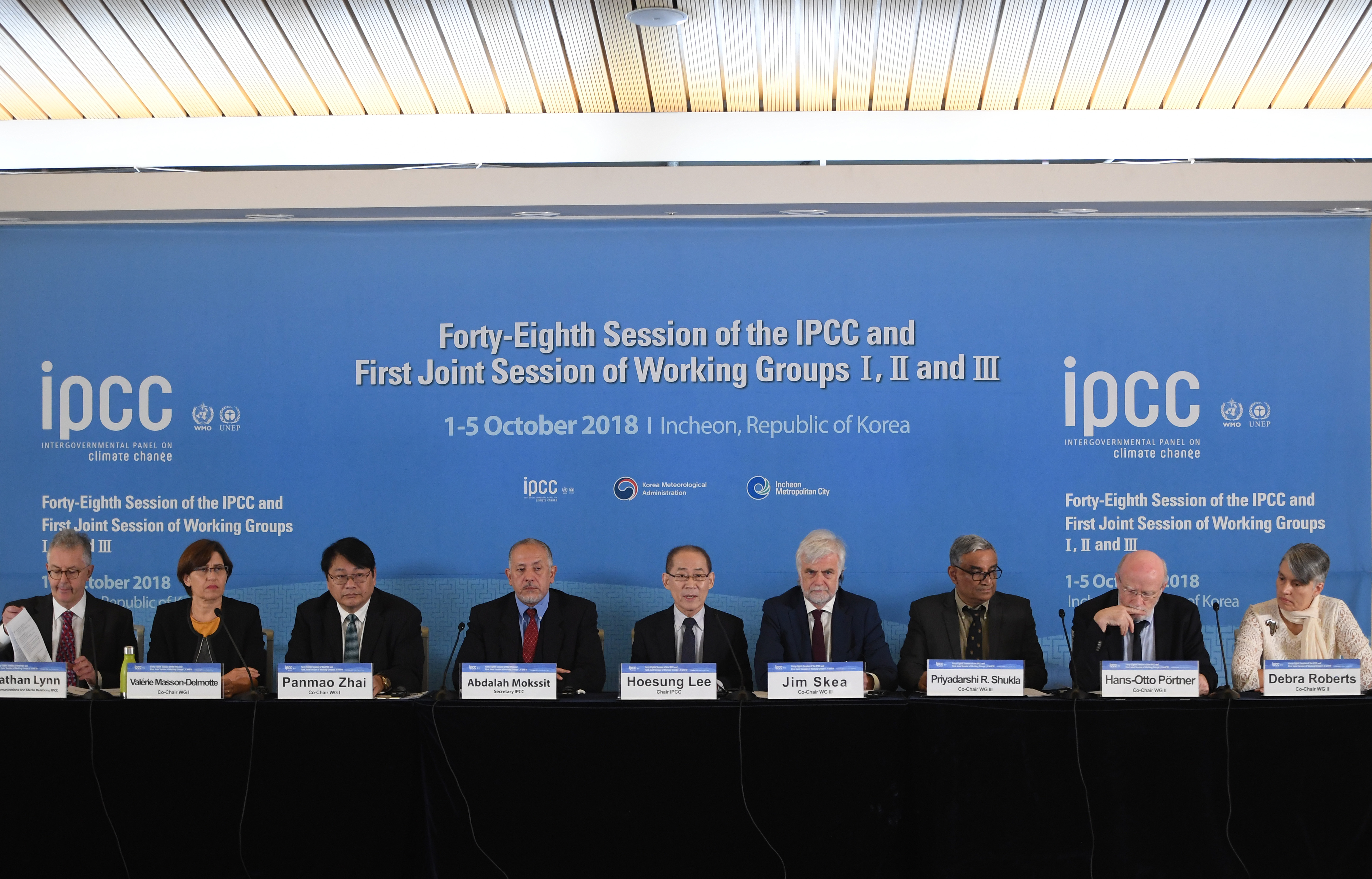
Over the past couple of decades, climate scientists have warned government leaders that global warming could pose an extinction-level threat to humanity. In response, policymakers have asked climate scientists for recommendations to stave off catastrophic global warming, just as long as these recommended policies wouldn’t curtail economic growth. Climate scientists, in turn, have come up with a series of proposals that are the equivalent of magic: They deliver desired results, but only if you believe in miracles. For the most part, everyone involved in this magic show has the right intentions. The problem is that we’re betting our entire future on fairy dust.
A case in point is the just-released Special Report on Global Warming of 1.5°C, drafted by the Intergovernmental Panel on Climate Change at the request of the United Nations. The purpose of the report is to explore the differences between a 2 degrees Celsius maximum target for global warming and a 1.5 degree target, and to identify ways to achieve that lower target. The reason for working to limit warming below the more ambitious threshold is that a number of low-lying nations (on whose approval the Paris Agreement depended) will literally be underwater if temperatures rise beyond that limit. As solutions, the report discusses ways to capture and sequester carbon dioxide, or ways of pulling CO2 out of the air. The report also suggests that we can continue to grow gross domestic product (GDP) while decreasing energy use.
I call these solutions “magic” because they are unlikely to accomplish much in the real world except to distract our attention from the necessary work of cutting emissions. Each has been shown to be a pipe dream at scale, even if—as in the cases of carbon capture and sequestration (CCS), biomass-to-energy with carbon capture and storage (BECCS), direct air capture of CO2 (DAC), and air-to-fuel conversion technologies—pilot projects have succeeded in demonstrating that the technology works.
Here’s why that’s unrealistic.
CCS raises the cost of power generation and cannibalizes up to a third of power produced in order to run machinery that can isolate, compress, pump, and store the CO2 that has been removed from the combustion byproducts of coal or natural gas. For this reason, CCS will never be implemented at scale unless governments put a massive price on carbon—and even then, the result would instead probably be a quicker shift to cheaper energy alternatives. BECCS suffers from the same cost drawbacks, but also needs huge amounts of land to grow biomass crops to burn for energy, thus entailing tradeoffs with food production, habitat, and biodiversity.
Direct capture of CO2 from air and air-to-fuel conversion technologies are, according to an early draft of the Special Report, “in early stages of development or need significant upgrading to be effective mitigation options and are not typically included in current scenarios.” In fact, all the technological components for DAC and air-to-fuel conversion exist and have been successfully tested. The problem, again, is the massive cost in both dollar and energy terms.
The new report relies on the prospect of decoupling energy from GDP. Take this passage, for example: “[E]nergy demand lower than present day, together with strong growth in economic output until the end of the century, is found in scenarios with shifts to more sustainable energy, material, and food consumption patterns.” In other words, if we switch energy sources and become vegetarians, we can achieve lots of economic growth while using much less energy. Despite this happy vision, decoupling energy from GDP has proven elusive in the past, and there are good reasons to think it will remain so.

(Photo: Jung Yeon-je/AFP/Getty Images)
Why all the conjuring and sleight of hand? Because policymakers have effectively asked scientists to do the impossible. No politician in a wealthy country wants to inform constituents that further economic growth is unachievable. And no international agency would deny hundreds of millions of poor people the hope of bettering their lives through economic growth in the developing world; that growth is built into the U.N.’s sustainable development goals, which are hardwired into the IPCC scenarios.
The essence of the problem is this: Growth currently comes from burning ever-growing quantities of fossil fuels in order to do economic work—from extracting resources to manufacturing products to delivering goods and services. Renewable energy sources can also do this work, but they have characteristics that are different from those of fossil fuels: They’re intermittent and produce electricity directly, while most of our current energy is used in the forms of liquid or gaseous fuels. Therefore to entirely replace fossil fuels with renewables would require a nearly complete transformation in how we use energy, and an extensive redesign of systems for generating, storing, and distributing energy. Switching to new and relatively clean energy sources while trying to maintain growth of the overall economy would be a little like redesigning and reconfiguring an airplane while it’s in flight.
Why not land the airplane, or at least stop trying to gain altitude, while we make the needed upgrades? That’s the argument of ecological economists, who point out that the one strategy that would reliably work to reduce emissions would be to shrink overall economic activity and rein in population growth.
Still, policymakers are unwilling even to discuss that pathway. Growth has become sacrosanct as a way of creating jobs, ensuring returns on investment, and expanding tax revenues. Every politician in every political party in nearly every country on Earth wants more of it, not less.
Reading between the lines of the Special Report, it appears that at least some climate scientists may understand the tradeoff between climate change mitigation and economic growth. Take this passage, for example: “Community-led and bottom-up approaches offer potentials for climate-resilient development pathways at scale. At the level of individuals, communities, and groups, emphasis on well-being, social inclusion, equity, and human rights helps to overcome limitations in capacity.” These sentences could easily have been written by an ecological economist or other post-growth theorist. Emphasis on well-being (instead of consumption) and equity (instead of growth) are mainstays of the eco-econ literature. But the authors of the Report don’t explicitly mention the possibility of ditching growth as a primary policy objective, presumably because government leaders might then be moved simply to dismiss the whole raft of recommendations.
That’s a shame, because planning for economic contraction would help solve not just climate change, but our other environmental problems as well, including biodiversity loss, topsoil loss, resource depletion, and air and water pollution. If government leaders followed the recommendations of ecological economists and de-emphasized GDP in favor of quality-of-life indicators, that might go a long way toward solving a range of social problems. And if they implemented a universal basic income or guaranteed jobs program—also staples of eco-econ thinking—we could reduce economic inequality.
Perhaps the ecological economists’ most telling point of all is that the end of growth is inevitable with or without climate action, since nothing grows forever on a finite planet. Even HSBC, England’s largest bank, recently warned that we’d exhausted our annual budget of natural resources by the month of August. We’re headed for a crash sooner or later. Wouldn’t it be better to make the post-growth transition on our terms, rather than in crisis mode? Why not use the inevitability of the end of growth to our advantage by planning to reduce both mindless consumerism and carbon emissions, while increasing equity and quality of life?
Surely it’s time for policymakers to discuss the possibility openly.





